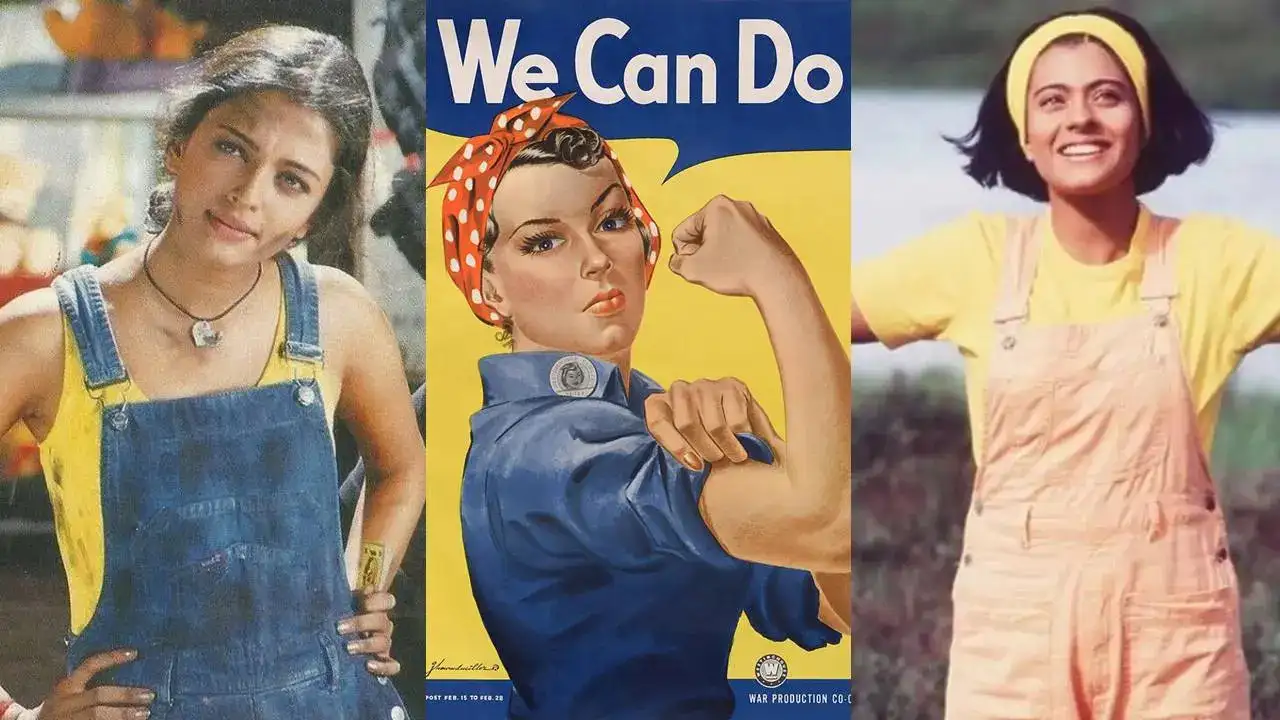From The Bustling Docks Of Dongri To International Runways: How A Humble Indian Cloth Transformed Into The Iconic Dungaree
By Eshita Bhargava
Copyright timesnownews

If you grew up in the ‘90s, chances are you had at least one pair of trusty dungarees. I certainly did. Mine were navy blue, a hand-me-down from my grandmother that I wore until my teenage growth spurt forced a reluctant farewell. What I didn’t know back then—and what surprises many even now—is that dungarees have a deeply Indian story. The name itself harks back to Dongri, a once-bustling dockside settlement on the edge of Bombay (today’s Mumbai), where a coarse cotton cloth called “dungri” was woven for sailors and stevedores. That humble fabric, stitched together for practicality rather than glamour, would go on to clothe miners, soldiers, and eventually supermodels. Origins in Dongri: A Cloth for Work, Not for Show In the seventeenth century, Dongri was part shipyard, part bazaar, part textile hub. The cloth produced there—dense, rough, and cheap—was perfect for hard graft on land and sea. Locals called it “dungri.” British traders, hearing the word, Anglicised it to “dungaree” and began shipping it to Britain. In an age before mass-produced fabrics, this sturdy cotton was a revelation. It became the go-to material for sailors’ trousers, dock workers’ jackets and even ship sails. One colonial officer’s diary from 1695 mentions “the blue dungaree cloth of Bombay” as an essential export alongside pepper and saltpetre. The Leap to the West: Stitched for the Working Class Once in Britain, the cloth quickly morphed from bolts of fabric into garments. The Industrial Revolution demanded durable, affordable clothing for miners, railway builders, and factory hands. Dungarees fit the brief perfectly. Fun fact: Levi Strauss’s first bib overalls in 1853 were made from a similar heavy cotton twill before denim took over. In British English, “dungarees” came to mean the full bib-and-brace overalls; in American English, the word often just meant “jeans.” Different continents, same rugged appeal. Women at Work: Wartime Reinvention During the First World War, and again in the Second, women stepped into jobs traditionally held by men—from munitions plants to shipyards. Practical clothing was essential, and dungarees became part of the unofficial female uniform. The famous 1943 “We Can Do It!” poster (often called Rosie the Riveter) shows a woman in a blue bib overall flexing her bicep—a symbol of empowerment stitched into cotton. In Britain too, the Women’s Land Army wore dungarees in the fields. These garments were not only tough but also liberating, offering a freedom of movement most women’s fashion at the time denied. Denim Versus Dungaree: Spotting the Difference It’s easy to lump dungarees and denim together, but there’s a subtle distinction. Denim is woven from undyed yarn and then dyed after weaving, which gives it that classic indigo “wash” effect. Traditional dungaree fabric, by contrast, uses pre-dyed yarn, resulting in a uniform colour. This might sound like textile trivia, but it’s why early dungarees had such a solid, workmanlike look, while denim developed its famous fades and whiskers. The two fabrics have since cross-pollinated, but their DNA is still distinct. From Counterculture to Catwalk By the 1960s and 1970s, dungarees had jumped from factory floors to protest marches, communes, and rock festivals. They became shorthand for solidarity with the working class, but also for youthful rebellion. Bob Dylan, the Rolling Stones, and countless folk singers wore them on stage. By the 1990s, dungarees were practically a rite of passage: grunge bands performed in them, hip-hop artists styled them loose with one strap undone, and even European royals were photographed in crisp designer versions. Few garments have travelled so far, both geographically and culturally. The Modern Revival: Sustainability and Style In the 2020s, dungarees are enjoying a quiet renaissance. Their loose silhouettes suit the relaxed, gender-neutral styles now dominating high street fashion. Smaller brands—such as Rebel Romance, which credits the fabric’s Indian roots—are creating ethically produced dungarees with inclusive sizing and contemporary cuts. Fashion students love them for upcycling projects; stylists pair them with sharp blazers or floaty blouses. What began as a dockworker’s cloth has become a chameleon garment, equally at home in a field, a café or a photo shoot. A Fun Footnote Here’s a little-known snippet: in old shipping logs, “dungaree” sometimes appears on the same page as “gunny bags” (jute sacks). That’s because both were among the cheap, hard-wearing textiles exported from India. In other words, the cloth that became a style icon started life as the maritime equivalent of bubble wrap—pure utility. Fashion history is rarely linear. It zigzags between classes, continents, and causes. “Dungarees” embodies that journey: a single word carrying centuries of trade, labour and reinvention. Next time you pull on a pair, you’re not just wearing a quirky retro piece—you’re wearing a thread that connects Mumbai’s docks to global catwalks, women’s rights campaigns, and even your own childhood wardrobe.



